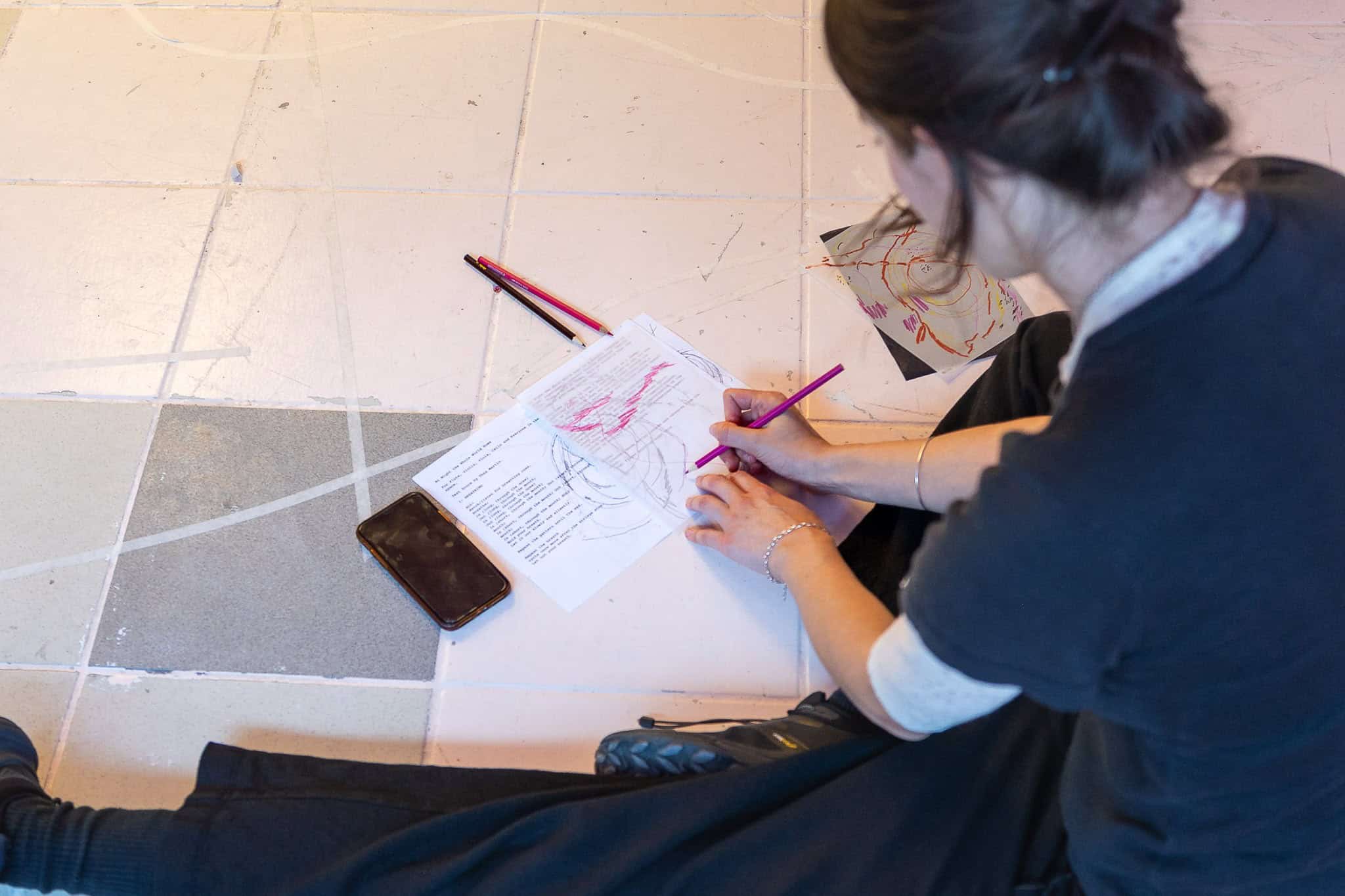
Finding Freedom in Movement
“As a child and teenager, I loved to dance; dance was a strong language for me.”
For Gabrielle, rediscovering the language of movement was one of the most personally transformative parts of her journey through Whitecliffe’s Creative Arts Therapies programme – one that led to a new professional outlook.
“As a young adult, it became harder to access as play slowly dissolved from my day-to-day,” she says. That disconnection lingered – until a turning point during her first year of study, when students were encouraged to explore a medium that felt unfamiliar or uncomfortable. Gabrielle chose movement. “Something happened – a little glimpse into the connection to movement again.”
That glimpse became a clear path she would follow throughout her studies and into her career. “It became a thread in my training to explore movement more and more. This led me to work in dance therapy placements and now practising further in expressive arts training where somatics and movement have become a key factor in my work. From the first year of training, when lifting my arms up freely to move was a challenge, to now sharing performance and movement sessions with communities – it feels like a breakthrough. The course provided permission to try something again, and I am so glad.”
Gabrielle discovered that Whitecliffe offered more than just a curriculum – it created a learning environment built on empathy, responsiveness, and encouragement. “I found my experience at Whitecliffe not only kind and caring but one where the lecturers, supervisors, and supports made themselves available to you throughout. I could mould the learning environment to one that suited my needs.”
Placements and practical assignments were embedded in the programme – something Gabrielle found especially meaningful. “I found the assignments within the course a rewarding opportunity because it not only strengthened my learning and understanding in my placements but also supported me to develop a grounded understanding of myself.”
That self-discovery went hand in hand with challenge. “The encouragement to widen my comfort zone working across different mediums in the creative process was an important part of this training,” she reflects. “For me, performance, using my voice, and sharing with large groups were something I grew to really love, and if it wasn’t for a safe and supportive environment, that wouldn’t have been possible.”
Asked how it felt to take those steps into the unknown, Gabrielle’s answer is immediate: “Affirming.”
Her time at Whitecliffe has deeply shaped not only her career, but her view of the profession. “It has taught me the power of creative arts therapies… I see the importance of this work, especially to communities who may not find themselves reflected or represented in traditional therapeutic models.”
To others considering Creative Arts Therapies at Whitecliffe, she offers both encouragement and realism: “Be prepared to be in the unknown, those challenges, and the awe – that’s the great beginning for this training and the work we do as creative arts therapists.”
From those first hesitant steps of rediscovery to sharing confident movement and healing with varied communities, Gabrielle’s journey reminds us that growth happens when we embrace uncertainty and challenge.